
The Microsoft Certified Solutions Associate is a range of qualifications that underline that you have a high level of expertise in a chosen area of speciality. Whether your interest is in servers, SQL or desktop support an MCSA can help you unlock doors

This four-day instructor-led course provides students with the knowledge and skills to develop a Microsoft SQL Server 2016 database. The course focuses on teaching individuals how to use SQL Server 2016 product features and tools related to developing a database.
The primary audience for this course is IT Professionals who want to become skilled on SQL Server 2016 product features and technologies for implementing a database.
The secondary audiences for this course are individuals who are developers from other product platforms looking to become skilled in the implementation of a SQL Server 2016 database.
This module is used to introduce the entire SQL Server platform and its major tools. It will cover editions, versions, basics of network listeners, and concepts of services and service accounts.
Lessons
Lab : SQL Server Database Development Tasks
After completing this module, you will be able to:
This modules describes the design and implementation of tables. (Note: partitioned tables are not covered).
Lessons
Lab : Designing and Implementing Tables
After completing this module, you will be able to:
This module describes more advanced table designs.
Lessons
Lab : Using Advanced Table Designs
After completing this module, you will be able to:
This module describes the design and implementation of constraints.
Lessons
Lab : Ensuring Data Integrity through Constraints
After completing this module, you will be able to:
This module describes the concept of an index and discusses selectivity, density and statistics. It covers appropriate data type choices and choices around composite index structures.
Lessons
Lab : Implementing Indexes
After completing this module, you will be able to:
This module includes covering indexes and the INCLUDE clause, hints, padding / fillfactor, statistics. It also execution plans and the DTE Lessons.
Lessons
Lab : Designing Optimized Index Strategies
After completing this module, you will be able to:
This module introduces Columnstore indexes.
Lessons
Lab : Using DML to Modify Data
After completing this module, you will be able to:
This module describes the design and implementation of views.
Lessons
Lab : Designing and Implementing Views
After completing this module, you will be able to:
This module describes the design and implementation of stored procedures.
Lessons
Lab : Designing and Implementing Stored Procedures
After completing this module, you will be able to:
This module describes the design and implementation of functions, both scalar and table-valued. (Also discusses where they can lead to performance issues).
Lessons
Lab : Designing and Implementing User-Defined Functions
After completing this module, you will be able to:
This module describes the design and implementation of triggers.
Lessons
Lab : Responding to Data Manipulation via Triggers
After completing this module, you will be able to:
This module covers the creation of in-memory tables and native stored procedures. Furthermore, advantages of in-memory tables are discussed, for example the removal of transaction blocking.
Lessons
Lab : Using In-Memory Tables
After completing this module, you will be able to:
This module describes the design and implementation of triggers.
Lessons
Lab : Implementing Managed Code in SQL Server
After completing this module, you will be able to:
This module covers the XML data type, schema collections, typed and un-typed columns and appropriate use cases for XML in SQL Server.
Lessons
Lab : Storing and Querying XML Data in SQL Server
After completing this module, you will be able to:
This module describes spatial data and how this data can be implemented within SQL Server.
Lessons
Lab : Working with SQL Server Spatial Data
After completing this module, you will be able to:
This module covers full text indexes and queries.
Lessons
Lab : Storing and Querying Blobs and Text Documents in SQL Server
After completing this module, you will be able to:



Looking to get into end user, programming or CRM? Speak to a course advisor today!
To find out more about Microsoft Dynamics please click below to...
Find out more »